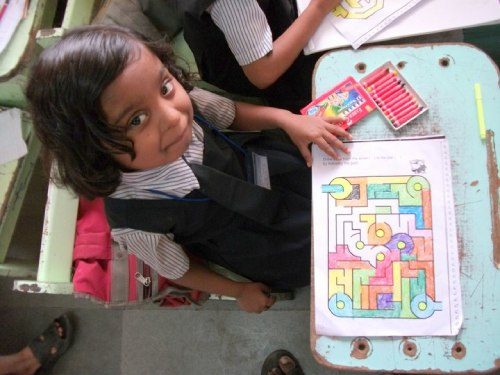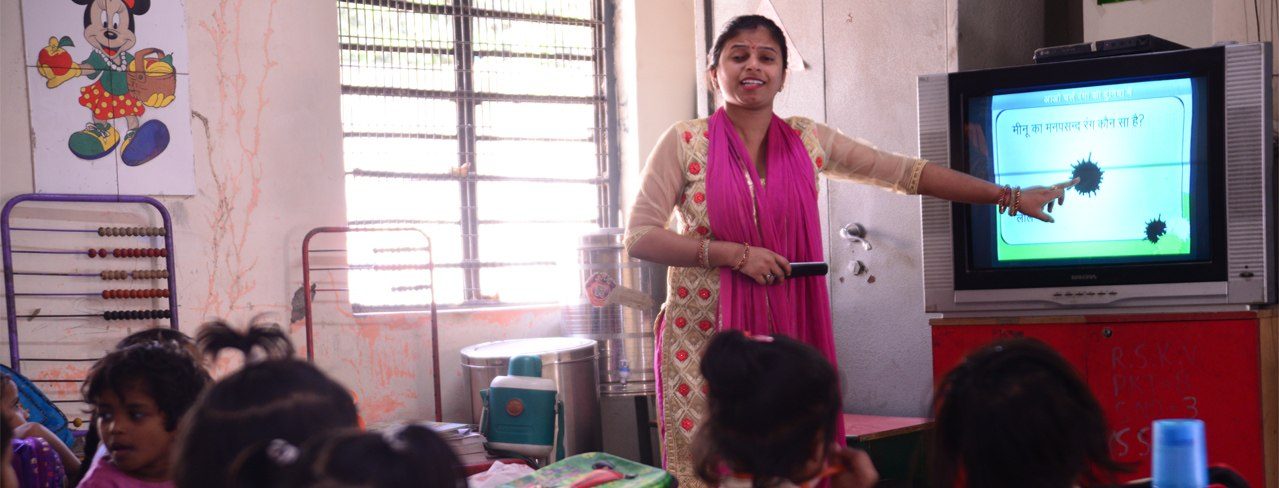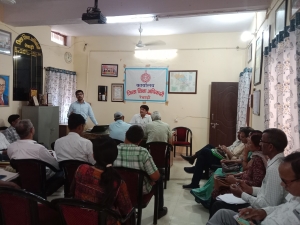With the elections underway, there is immense focus on issues that concern the public (voters) at large, from the state of the economy to the nation’s security. However, one major topic that often slips under the radar is education. Given the relevance of school education to over 40% of the Indian population, it is important to examine what the two major national parties, the Indian National Congress (INC) and the Bharatiya Janata Party (BJP), have laid out in their election manifestos – and what the new government can do to improve the quality of education once it comes to power.
While the two parties have their own distinct approach to education reform, the starting point is the same – both have committed to improving learning outcomes of children. This is critical because over the last few years, India’s learning crisis has brought into sharp focus the need to look at the overall quality of education being provided, beyond access and infrastructure. It is clear that merely being in school does not imply that children are learning, so there is an urgent need for education reform to address this issue. We look at two critical aspects of reform – foundational learning in the early years, and the use of EdTech.
| Congress Manifesto | BJP Manifesto | |
|---|---|---|
| Quality of education | Attach the highest importance to learning outcomes | Identified learning outcomes for various classes and the priority in the next five years will be to ensure that children achieve these learning outcomes |
| Teacher training | Increase the capacity, number and quality of Teacher Training Institutes set up by the government; Implement a scheme for the periodic and continuing education of teachers | Establish National Institutes of Teachers’ training to provide four-year integrated courses |
| Schools | Increase the number of Kendriya Vidyalayas and Navodya Vidyalayas based on demand and with the co-operation of the State Governments | Aim to open another 200 such schools by 2024 |
| EdTech | Employ technology-enabled teaching methods and technology-driven, personalised and adaptive learning tools in all schools | Provide smart classes in schools, beginning with secondary classrooms |
| Source | https://manifesto.inc.in/pdf/english.pdf | https://www.bjp.org/en/manifesto2019 |
Addressing Quality in the Early Years
While the focus of the national parties towards improving student learning is a well-intentioned first step, it is important to diagnose the nature of the learning crisis in order to
build a coherent reform agenda.
Learning assessments across India have consistently shown that shortfalls start early, while the child is still in primary school. The 2018 Annual Status of Education Report (ASER) found that nearly 73% of class 3 students were unable to read and understand simple text or do basic two-digit subtraction. This gap in early learning matters as grade 3 is the key ‘inflection point’ by when children are expected to ‘read to learn’ – this is where children who have not acquired these foundational skills essentially get left behind. The learning gap continues to widen as such children find it harder to keep up in the later grades, when the text and mathematical concepts become more complex and difficult to comprehend. Studies in India show that 90% of students are unable to keep up with curriculum and more than 50% of students reach grade 1 level competencies only by grade 5 (Muralidharan and Zieleniak 2013).
Politicians and policy makers need to understand that poor academic performance in later grades and high drop-out rates are rooted in weak foundations in primary school. Therefore, any reform agenda aimed at improving student learning outcomes must focus on ensuring that every child acquires foundational learning skills in classes 1, 2 and 3. This emphasis on the early years is missing in the vision outlined for school education by both the parties. Developing countries such as Brazil, Kenya and the Philippines have been able to successfully improve learning levels by introducing dedicated large-scale national programs. In India too, launching a national mission with a sharply defined goal of early learning will ensure that the entire system is geared towards solving this fundamental problem.
There is also little mention in either of the manifestos of pre-primary education. A critical enabler for universal foundational learning is to ensure that children are ‘school ready’ by the time they enter class 1 and have the necessary skills to be able to make the most of their schooling. In India, the Ministry of Women and Child Development (MWCD) covers all aspects of early childhood care, including health and nutrition, through a system of anganwadis. Preschool education, in such a scenario, is not a prioritized area.
The government has attempted to rectify this in recent times, by extending the Samagra Shiksha program to cover education from preschool to class 12, working on providing training to anganwadi workers and establishing a curriculum for preschool education. However, the provision as well as quality needs to be further improved for all children to get at least one year of appropriate pre-primary schooling. This has been implemented in countries like China and Bangladesh after numerous studies provided evidence of high returns on investment in pre-primary education.

Using EdTech for Learning
Using technology, on the other hand, is something both parties are clearly invested in, and this is encouraging given that EdTech can play an important role in driving learning. The manifestos indicate that the two parties have chosen to prioritize different models of adoption. While the BJP has said that it will introduce ‘smart classes’ in secondary schools, the Congress promises to deploy personalized and adaptive learning tools in all schools.
In the Indian context, where there is a huge diversity in the medium of instruction and in the learning levels of children even within the same class, personalised adaptive learning (PAL) tools can be extremely effective as they can be customized as per each child’s learning levels and needs. Meanwhile, smart classes involve equipping classrooms with computers, smartboards and other infrastructure that can be used to display curriculum-aligned content in the form of videos, interactive games, etc. This can strengthen teacher instruction and improve student engagement by providing richer learning content. Ideally, a combination of both models would be required to truly tap into the potential of EdTech.
The education sector has also benefited from the digital push of the previous five years. Operation Digital Board was launched earlier this year, while several portals, apps and content have been introduced by the government and others to leverage technology more comprehensively. The next step would be bringing these efforts together and creating a roadmap with a long-term vision for EdTech in India. To start with, the government should aim to provide all middle and secondary schools with at least basic IT infrastructure by 2025, addressing the lack of hardware in schools, poor Internet penetration and difficulties in equipment procurement and maintenance. This will enable the use of technology-based solutions, which will also need to be contextualized to make them relevant to Indian students.
Long-term Vision
Investing in the early years goes beyond education alone, having a positive impact on a child’s life outcomes. In fact, lack of basic reading skills poses a severe challenge to other initiatives aimed at health, employability and digital empowerment. Only when all children are equipped with the essential skills, will they be able to make the most of what the Indian education system is capable of offering to them.



